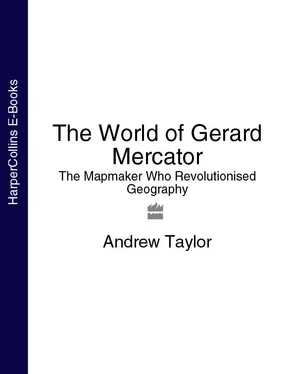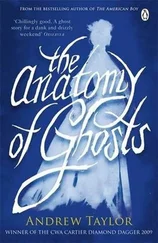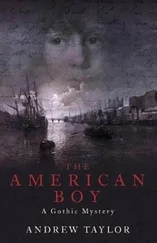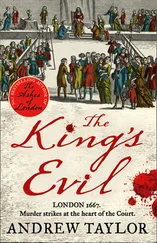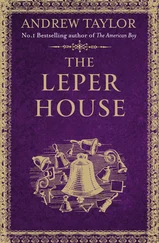1 ...7 8 9 11 12 13 ...18 The empire was vast and unwieldy, and his possessions were too far-flung to be governed. When Charles traveled to his Spanish kingdom to secure the succession there in 1517, he was thought of as a foreign interloper surrounded by boorish Flemish advisers who trampled over the country’s aristocracy, while in the Netherlands he was reviled as a lover of Spanish luxury with an intolerable train of arrogant Castilian grandees. Had they ever heard it, his Netherlands subjects would have been less than amused by his famous boast, “To God I speak Spanish, to women Italian, to men French, and to my horse, German.” His native Flemish was not even on the list.
There was constant feuding in Spain, and near anarchy in Germany, where the great inheritance of the Holy Roman Empire was largely ruled by lawless and belligerent knights who accepted no authority but their own. The disparate duchies, counties, and cities of the Netherlands were racked with ancient feuds. The Hoeks of Holland, the Kabeljaws of Zeeland, and the Lichtenbergers and Lockhorsts of Utrecht wrangled in a constant round of shifting alliances, betrayals, victories, and defeats. In Guelderland the Heckerens fought the Bronkhorsts, and in Friesland the Schieringers were the sworn enemies of the Vetkoopers. The great free cities of Ghent, Bruges, Antwerp, and Brussels zealously guarded their ancient privileges against any attempt to impose central authority.
In addition to this internecine violence, over the next half century Charles would face recurrent international wars with the French, and with the armies and navies of the Ottoman emperor Suleiman the Magnificent, massed on the eastern and southern borders of his empire. His reign was an endless round of revolts, rebellions, wars, and betrayed alliances.
The imperial crown also involved him inextricably in the bloodletting of the Reformation. Bitterness over corruption in the Catholic Church had existed for as long as anyone could remember; to the reformists, the popes in Rome seemed more concerned with worldly show than piety. In the late 1470s and early 1480s, Sixtus IV built the Sistine Chapel; then Julius II and Leo X supported the work of Michelangelo and Raphael; in the following years, the supposedly celibate Alexander VI used bribery, corruption, and murder to advance the interests of his children, Lucrezia Borgia and Cesare Borgia. None of them seemed interested in the reforms for which many in the Church and among the laity were crying out. During Charles’s reign, these demands developed into not only a religious challenge to the Church but also a political challenge to the Holy Roman Empire itself. Charles V – “God’s standard bearer,” as he grandly called himself – saw his duty as defending the Catholic faith not just from the Muslim Ottoman Empire across his borders but also from the reformists and Protestants within. In 1523, when Gerard Mercator was a boy of eleven, two young monks, Johann Esch and Heinrich Voes, were burned alive as heretics in the central square of Antwerp, the first of tens of thousands to go to the stake over the next half century as the Inquisition sought to root out heresy wherever it hid. The legacy of the complex genealogical maneuvering that had created Charles V’s empire was one of political chaos and human misery across the Netherlands and the rest of Charles’s domain.

Charles V by Titian
Museo del Prado
IN THE YEAR 1512, the artisan Hubert de Cremer was one of Charles’s struggling subjects. His was the misery of poverty: His father had made the journey east from his native Flanders to Gangelt, in the German duchy of Jülich, many years before, filled with hope and ambition for the future, but Hubert had become a cobbler scrabbling to find enough money to feed his wife and family. He already had five children, and his wife was expecting their sixth, but though he was willing to work, he had found few opportunities in Gangelt. His best hope of staving off poverty lay in returning to Rupelmonde, where his father’s family still lived.
The port of Antwerp, just a few miles downriver from the town of Rupelmonde, was one of the most affluent centers in the Low Countries, one of the largest cities of its day, where eighty thousand people lived in houses that were the envy of the rest of Europe. Antwerp had been a busy port on the River Scheldt for centuries – its name comes from the Flemish aan-de-werfen (on the wharves) – but the bales and baskets piled high on the docks were not just a sign of its prosperity; they were tangible evidence that the world was growing faster than it had ever done before. The ships that maneuvered for position brought cargoes not only from the Baltic, England, Spain, and Germany but from farther afield as well, from lands that were so distant, so newly discovered, they still seemed almost mythological to the laborers who sweated to unload the merchandise.
Not many years before, the ports of Venice and the other Italian city-states had been crowded with cargo ships, linking with the ancient overland routes from the East to bring spices, precious stones, silks, and finery to Europe. For centuries, all roads really had led to Rome. But by 1512, ships could follow Vasco da Gama’s route to India around the southern tip of Africa and bring their cargoes straight back to the north and west of Europe. The rapidly growing trade with the New World, too, could be carried out more easily from western Europe than from Italy. The pattern of commerce was shifting: More than 2,500 ships might be crowded into Antwerp’s port at any one time, and 500 vessels would come and go in a single day.
With the cargoes came stories of new expeditions, and of the fresh discoveries that were being made in the New World and in the farthest reaches of Asia. Such talk, true and false alike, was devoured by the educated citizens; but the bales, bundles, and boxes were the real stimuli to anyone with imagination and curiosity about distant lands. The waters of the Scheldt flowed for hundreds of miles through a continent hungry for the goods that the ships had unloaded. Along the docks of Antwerp, the age of discoveries was a daily reality.
When he arrived there late in February 1512, Hubert had four sons, a daughter, a pregnant wife, and no real prospects of employment. His one advantage was an uncle in the Catholic Church. Several years before, in Gangelt, Hubert had named his firstborn child after his father’s brother, and he turned to that same Uncle Gisbert, the chaplain of Rupelmonde’s Hospice of St. Jean. Gisbert was not wealthy but comfortably off, and he used his influence to find Hubert and his family a place in the monastery guesthouse. It would have been a simple, even spartan home, but still a welcome shelter for a family on the brink of penury. There, at six o’clock in the morning on March 5, 1512, only a few days after she had arrived in Flanders, Hubert’s wife, Emerance, gave birth to their sixth child, Gerard. The anxious cobbler made a precise note of the date and time, as he had done for the birth of his other children.
The town’s tax records show Hubert, Emerance, and their six children lived on top of each other in a lodging half the size of the house his single uncle Gisbert kept for himself. *Gisbert, a busy, energetic priest, filled with ambition for himself and his family, was the key to whatever future they would have. For him as for many others, the Church had been a route to worldly security as well as to salvation, and his post as chaplain at the hospice gave him financial independence, respectability, and a degree of influence. Well educated himself, he determined to do what he could for the rest of his family. Within a few months, his nephew Hubert was using his skills to produce shoes for the hospice and steadily building up his business in the town, while the older boys, with Gisbert’s encouragement and influence, had started on careers of their own in the Church. Rupelmonde’s church records show that Hubert’s second son, Dominic, eventually followed his great-uncle into the post of chaplain at the hospice, while the eldest boy, Gisbert, named in his great-uncle’s honor, became a priest in the nearby village of St. Nicholas. There was no doubt that they and the other two boys would do well, while their sister, Barbe, was being carefully prepared for the marriage that would secure her future.
Читать дальше
